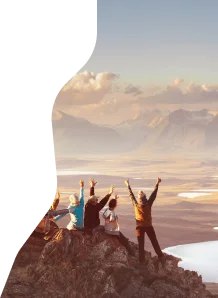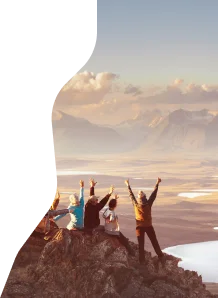The annual MTN Bushfire Festival has become a global phenomenon attracting thousands of visitors each year. Culture Trip investigates what makes this festival eSwatini’s answer to Glastonbury.
Mr Eazi was among the international stars who performed on stage at MTN Bushfire 2019 | © Bram Lammers
Established in 2006 by Swazi-born philanthropist and artist Jiggs Thorne, MTN Bushfire is now a global phenomenon with more than 26,000 people from 60 different countries attending each year. It’s considered to be one of Africa’s seven best festivals. According to Forbes Africa, Thorne, who was born and raised in eSwatini (formerly known as Swaziland) – founded a shop selling Swazi arts and crafts, which led to the creation of an eclectic gallery and performance venue, House on Fire. His vision was “to create a space to nurture the local creative industry”, which led to the creation of Bushfire festival in 2006, an event developed not only to promote and celebrate the arts, but also to raise money and awareness for local causes.
As well as live music, Bushfire offers poetry readings, theatre, dance and circus performances, film screenings, a handicraft market and visual art displays. Dedicated to promoting social responsibility, the festival donates 100% of its profit to local charities to ensure that the festival and the tourists it attracts have a positive effect on the country’s economy and community. In 2017, Bushfire won the Gold Star for Best Responsible Event at the Africa Responsible Tourism Awards.
MTN Bushfire is an annual festival of music, poetry, theatre, dance, circus performance, film, craft and visual art | © Bram Lammers

When and where?
Bushfire is a three-day weekend festival that takes place at House on Fire in eSwatini’s Malkerns Valley in May (Friday from 4pm to 3am, Saturday from 10am to 3.30am and Sunday from 10am to midnight) every year.
The festival is located 23km (14mi) from eSwatini’s capital city, Mbabane, and 14km (8.7mi) from the nearby town of Ezulwini. The Mdzimba mountains stand proudly in the background and the lush fields of the Ezulwini Valley, where Swati kings once lived, border the site. The surrounding areas of garden and undeveloped land are used for camping.
The venue itself, the House on Fire, is known for its playful, imaginative design and architecture – colourful mosaics, sculptures and artworks are placed all around. Each section of the venue has its own charm and is used for different parts of the festival. The Super Stage is set on the lawns; the House on Fire Amphitheatre (described as a sunken “Afro-Shakespearian Globe Theatre”) hosts music, poetry and dance performances; the Barn Acoustic Stage (a renovated barn) hosts acoustic music, open-mic performances and talks; the energetic Firefly stage, on the outer edges of the festival site, showcases up-and-coming DJs, rappers and hip-hop artists and comes with its own cocktail bar. There is also a Golden Lounge, an exclusive, special ticket-only area where guests can watch performances from raised platforms with comfy seats, heaters, toilets and a bar serving food and drinks.
MTN Bushfire takes place over a three-day weekend at House on Fire in eSwatini’s Malkerns Valley | © Daniel Toro

Why is it important?
Bushfire is not just a music festival dedicated to cultivating and promoting Swazi arts, culture and music; part of its mission is also to inspire positive social change by calling on the public to “Bring their Fire” to help make a difference. In the “Bring Your Fire” zone – an interactive zone at the centre of the festival – festival-goers can listen to talks, visit art exhibitions and take part in discussions, workshops and debates about local and global social issues and initiatives that are trying to make a difference. Themes covered include sustainability, equality, education, HIV, mentoring and community support. The space encourages advocacy by asking guests to become more socially accountable and help create a better world. There is also an Arts Round Table in which local artists and musicians can learn from top industry professionals on how to succeed in the business.

Become a Culture Tripper!
Sign up to our newsletter to
save up to $1,656 on our unique trips.

Sustainability is at the heart of the festival, and events include tree planting, recycling activities and solar-powered film screenings. The use of recyclable or biodegradable packaging materials is also compulsory for vendors.
Equally as important, all of the festival’s profits are put towards good causes: a percentage of each ticket sale is donated to Young Heroes, a local charity that provides food and clothing to AIDS orphans, and 100% of the profits from merchandise sales go to the Gone Rural boMake development project, which supports health, water sanitation, education, infrastructure development and creating sustainable livelihoods for rural Swati communities.
The festival cultivates Swati arts, culture and music and promotes positive social change | © Daneil Toro

How to get there
As eSwatini is quite a small country, getting to House of Fire is only a few hours’ drive from each of the main cities, and travellers who didn’t fly into the country’s airport (King Mswati III International Airport near Manzini) can drive easily across the border from South Africa. For those without a car, local transportation is cheap and easy (albeit fairly basic), and the festival puts on a park and ride service to take festival-goers to and from the venue between Mbabane, Ezulwini and Manzini.
For travellers looking to explore eSwatini and neighbouring South Africa and Mozambique as part of their trip, various travel packages are available through All Out Africa, Holiday World Travel & Tours, Nomad Adventure Tours, Rush Adventures and SkyWorld Travel & Tours. Travel packages can be purchased through the main Bushfire ticketing page.
Causes supported at the festival include sustainability, education, HIV and mentoring | © Daniel Toro

Where to stay
MTN Bushfire has various camping options with hot showers, flushing toilets, running drinking water and a 24-hour café. Prices vary from a standard spot to family-only areas, glamping and caravan sites.
Camping prices are in addition to the cost of a festival ticket, and camping spaces cannot be purchased on arrival; camping and other nearby accommodation options sell out fast, so it’s best to plan well in advance. Guests must buy a full festival pass before buying a camping pass. There’s free campsite parking nearby, or visitors can pay for a spot to camp next to their car (1,100 Rand (£56) per vehicle; 650 Rand (£35) per vehicle for families).
All of the festival’s profits go towards good causes | © Daniel Toro

Where to eat
Bushfire festival has its own Global Food Village with a range of gourmet street food inspired by traditional Swati dishes as well as other dishes from around the world. There are many vegetarian and vegan options as well.
What to take
While many countries don’t need a visa to travel to eSwatini, checking visa requirements for your country is highly recommended before travelling to prevent issues at the border.
Bushfire is a “cashless” festival, so guests will need to buy and pre-load a cashless wristband before the festival to be able to buy food and drink – once loaded, tapping the wristband against a trader’s mobile device will complete payment. Cash, credit and debit cards will be accepted at most of the Marketplace stalls. There are Top Up Stations at the festival where money can be added to wristbands, and guests can cash out any leftover money at the end of the weekend. The festival has its own Marketplace (which sells sustainably sourced and environmentally friendly products and festival merchandise, such as T-shirts, hoodies and hats), and there are also shops in the nearby towns.
A diverse range of traditional and contemporary artists from various genres and countries perform at Bushfire each year.
Hundreds of artists from about 30 countries took part in the 2019 festival. Past acts have included eSwatini’s most popular musical export Sands as well as African legends Salif Keita, Yemi Alade and Ladysmith Black Mambazo.
Hundreds of artists from about 30 countries took part in the 2019 festival, which attracted more than 26,000 people | © Daniel Toro
 Culture Trips launched in 2011 with a simple yet passionate mission: to inspire people to go beyond their boundaries and experience what makes a place, its people and its culture special and meaningful. We are proud that, for more than a decade, millions like you have trusted our award-winning recommendations by people who deeply understand what makes places and communities so special.
Culture Trips launched in 2011 with a simple yet passionate mission: to inspire people to go beyond their boundaries and experience what makes a place, its people and its culture special and meaningful. We are proud that, for more than a decade, millions like you have trusted our award-winning recommendations by people who deeply understand what makes places and communities so special.
Our immersive trips, led by Local Insiders, are once-in-a-lifetime experiences and an invitation to travel the world with like-minded explorers. Our Travel Experts are on hand to help you make perfect memories. All our Trips are suitable for both solo travelers, couples and friends who want to explore the world together.
All our travel guides are curated by the Culture Trip team working in tandem with local experts. From unique experiences to essential tips on how to make the most of your future travels, we’ve got you covered.
Source link : https://theculturetrip.com/africa/swaziland/articles/the-ultimate-guide-to-mtn-bushfire-festival-eswatinis-answer-to-glastonbury
Author :
Publish date : 2019-12-16 08:00:00
Copyright for syndicated content belongs to the linked Source.





